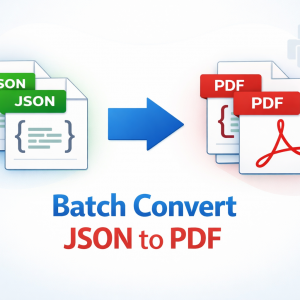Understanding the Power of SharePoint Online Views
Before diving into the creation process, it's essential to grasp why SharePoint Online views are so valuable. Views are essentially customized ways of displaying the items within a list or library. Instead of being limited to a single, default presentation of your data, views allow you to:
- Filter Data: Display only the items that meet specific criteria (e.g., documents created within the last month, tasks assigned to a particular user).
- Sort Data: Arrange items in a logical order based on one or more columns (e.g., alphabetically by title, chronologically by creation date).
- Group Data: Categorize items based on a chosen column, providing a summarized and organized overview (e.g., group tasks by status).
- Customize Columns: Select which columns are visible and their order of appearance, focusing on the most relevant information.
- Apply Formatting: Enhance the visual presentation of your data with conditional formatting and styles.
- Target Specific Audiences: Create different views tailored to the needs of various teams or individuals.
By strategically implementing SharePoint Online views, you can significantly improve data accessibility, streamline workflows, and enhance team productivity.

Step-by-Step Guide: How to Create a View in SharePoint Online
Creating a custom view in SharePoint Online is a straightforward process. Follow these detailed steps to tailor your data presentation:
- Navigate to Your List or Library:
The first step is to open the specific SharePoint Online list or library for which you want to create a new view. You can do this by clicking on its name in the site navigation or by accessing it through the site contents.
- Access the View Options:
Once you are in the list or library, look for the dropdown menu associated with the current view. This is typically located in the upper right-hand corner of the page, often labeled with the name of the current view (e.g., "All Documents," "All Items"). Click on this dropdown menu.
- Select "Create new view":
From the dropdown menu, select the option that says "Create new view". This will open the view settings page.
- Choose a View Type:
On the "Create View" page, you will be presented with different view types. The most common type is the Standard View, which provides a tabular display of your data with options for sorting, filtering, grouping, and column selection. Unless you have specific requirements for a calendar or datasheet view, Standard View is usually the best choice. Select "Standard View".
- Name Your View:
In the "Name" section, provide a descriptive and easily understandable name for your new view. This name will appear in the view dropdown menu, so make it clear what the view is intended for (e.g., "Open Tasks," "Documents Modified Last Month," "Projects by Status"). Ensure the "Make this the default view" checkbox is unchecked unless you want this new view to be the initial view users see when they access the list or library.
- Select Columns to Display:
In the "Columns" section, you can choose which columns from your list or library will be visible in this view and their order.
- To include a column: Check the checkbox next to the column name.
- To reorder columns: Use the up and down arrows next to each selected column to arrange them in your desired sequence.
- Configure Sorting (Optional):
The "Sort" section allows you to specify how the items in the view should be ordered. You can sort by up to two columns, choosing ascending or descending order for each. For example, you might want to sort tasks by "Due Date" in ascending order and then by "Priority" in ascending order within the same due date.
- Apply Filtering (Optional):
The "Filter" section is crucial for displaying only a subset of your data. You can create filter conditions based on the values in one or more columns.
- Show all items without any filters: Select this option if you don't want to filter the data.
- Show items only when the following is true: Select this option to define your filter criteria. You can create multiple filter conditions using "AND" or "OR" logic. For example, you can filter for tasks where "Status" is equal to "In Progress" AND "Assigned To" is equal to the current user.
- Set Up Grouping (Optional):
The "Group By" section allows you to group items based on the values in a selected column. You can choose one or two columns to group by. For example, you can group documents by "Document Type" to see all similar documents together. You can also specify whether the groups should be displayed in ascending or descending order and whether the group headers should be expanded or collapsed by default.
- Customize Totals (Optional):
If your list or library contains numerical columns, the "Totals" section allows you to display calculations like sum, average, count, minimum, or maximum for those columns within the view.
- Apply Styles (Optional):
The "Style" section offers options to enhance the visual presentation of your view. This might include highlighting specific rows or applying different formatting.
- Configure Tabular View (Optional):
The "Tabular View" section allows you to control how items are displayed in the table, such as enabling or disabling inline editing.
- Save Your View:
Once you have configured all the desired settings, scroll to the bottom of the page and click the "OK" button to save your new view.
Accessing and Managing Your Views
After creating your SharePoint Online view, you can access it anytime by clicking on the view dropdown menu in the upper right-hand corner of your list or library and selecting its name.
You can also manage your existing views by clicking on the view dropdown menu and selecting "Edit current view". This will take you back to the view settings page where you can modify its configurations. To delete a view, you would typically go to the list or library settings and find the section for views.
Best Practices for Creating Effective SharePoint Online Views
To maximize the benefits of SharePoint Online views, consider these best practices:
- Plan Your Views: Before creating a view, think about who will be using it and what information they need to see.
- Use Clear and Descriptive Names: Make it easy for users to understand the purpose of each view.
- Keep Views Focused: Avoid including too many columns or complex filtering that can make the view cluttered.
- Consider Performance: Views with excessive filtering or grouping on large lists might impact performance.
- Train Your Users: Educate your team on how to access and utilize the different views available.
- Regularly Review and Update Views: As your data and team needs evolve, ensure your views remain relevant and effective.
Conclusion:
Now you know how to master creating a view in SharePoint Online; it is a fundamental skill for anyone working with this powerful platform. By leveraging the flexibility and customization options that views offer, you can transform raw data into meaningful insights, streamline workflows, and empower your team to access the information they need quickly and efficiently. Take the time to explore the various view settings and discover how they can help you unlock the full potential of your SharePoint Online lists and libraries.?
Recommended Solution for SharePoint Admins






